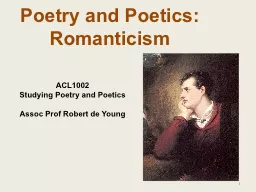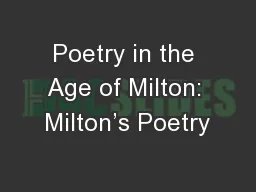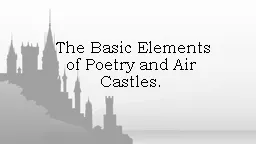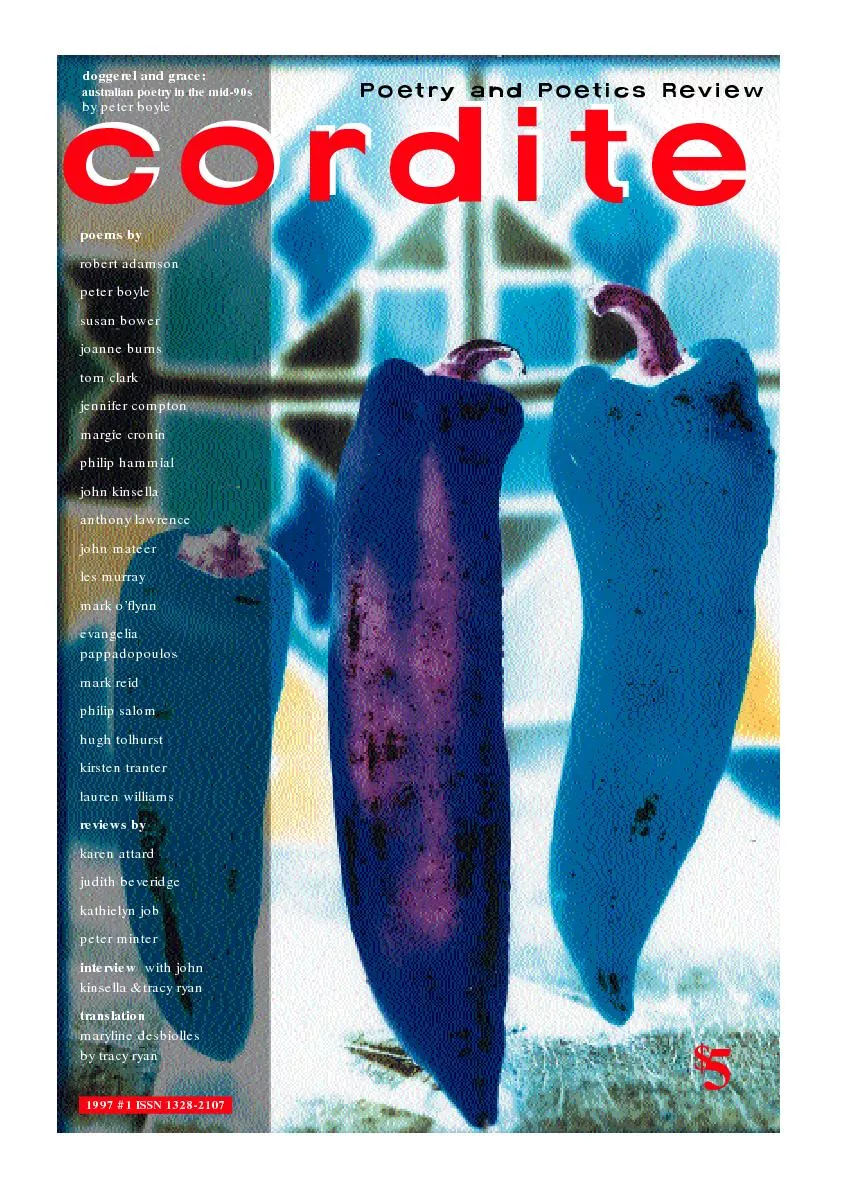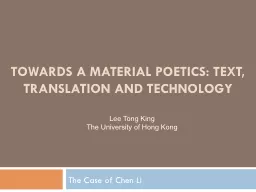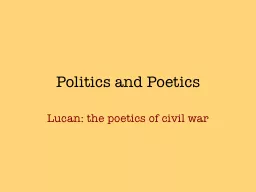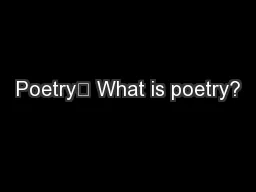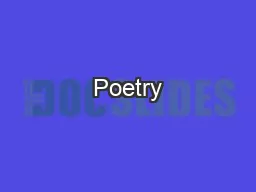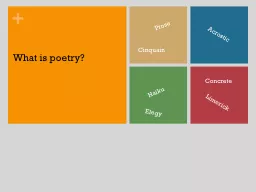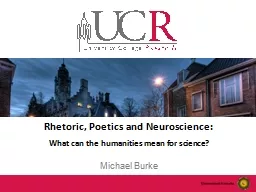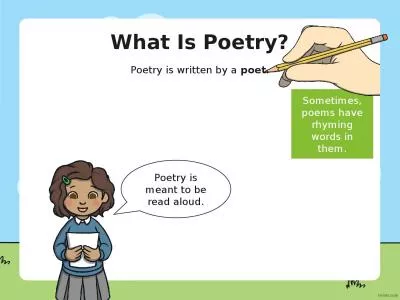PPT-Poetry and Poetics:
Author : trish-goza | Published Date : 2016-04-05
Romanticism ACL1002 Studying Poetry and Poetics Assoc Prof Robert de Young 1 Lecture outline Overview of Romanticism Lecture themes Romanticism and the Gothic
Presentation Embed Code
Download Presentation
Download Presentation The PPT/PDF document "Poetry and Poetics:" is the property of its rightful owner. Permission is granted to download and print the materials on this website for personal, non-commercial use only, and to display it on your personal computer provided you do not modify the materials and that you retain all copyright notices contained in the materials. By downloading content from our website, you accept the terms of this agreement.
Poetry and Poetics:: Transcript
Download Rules Of Document
"Poetry and Poetics:"The content belongs to its owner. You may download and print it for personal use, without modification, and keep all copyright notices. By downloading, you agree to these terms.
Related Documents

